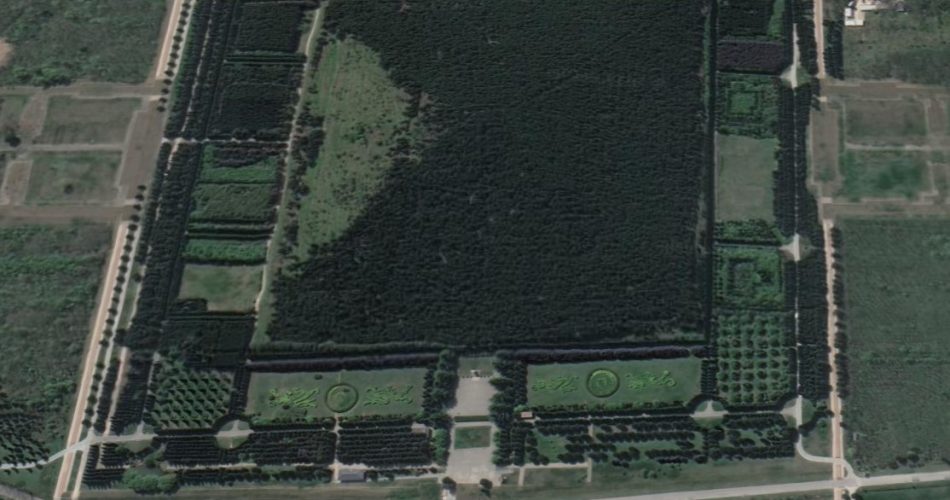The Mausoleum of Qin Shi Huang, China’s first emperor, isn’t just a tomb—it’s essentially a massive truncated pyramid, standing as one of the most mysterious structures in the world. While it doesn’t resemble the sharp pyramids we’re familiar with in Egypt or the step pyramids of Mesoamerica, its broad base and flattened top give it a pyramid-like appearance, making it a key part of pyramid history.
Qin Shi Huang, who ruled from 221 to 210 BCE, was the man responsible for uniting China. His reign is famous for major achievements like the early construction of the Great Wall of China and standardizing currency, weights, and measures. But the mausoleum he built for himself—meant to be his eternal resting place—is equally monumental. It’s tucked away near the city of Xi’an in the Shaanxi province and covers an area of 56 square kilometers, making it one of the largest burial sites ever constructed.
The Shape: A Pyramid, Sort of
Unlike traditional pyramid shapes, Qin Shi Huang’s mausoleum looks more like a truncated pyramid—a large, flat-topped mound that rises in a tiered fashion. The structure was made with the intent to reflect Qin Shi Huang’s vision of his empire in the afterlife. He didn’t just want a tomb; he wanted an entire world for himself underground. Ancient Chinese texts describe the mausoleum as having rivers of mercury flowing through it to mimic the great rivers of China. Now, this whole “rivers of mercury” thing might sound like a legend, but there’s actual scientific evidence of high mercury levels in the soil around the site, making those ancient stories not so far-fetched.
The Terracotta Army: An Empire’s Guardian
One of the most famous features of the site is, of course, the Terracotta Army. Discovered in 1974, this life-sized collection of soldiers was crafted to protect the emperor in the afterlife. The sheer scale of it is staggering—there are over 8,000 warriors, horses, chariots, and even acrobats, all painstakingly sculpted. Each figure is unique, with different faces, postures, and armor. It’s clear that this was no ordinary burial—this was a send-off fit for a ruler who intended to continue his reign, even in death.
Why It’s Still Sealed
Despite the discovery of the Terracotta Army, the central tomb—Qin Shi Huang’s actual burial chamber—remains sealed to this day. There are a couple of reasons for this. For one, the Chinese government is incredibly cautious about disturbing what is considered an important cultural relic. Secondly, archaeologists are worried about damaging whatever is inside. Excavation methods today are much better than they were decades ago, but we’re still not quite at the point where we can guarantee that everything inside will be preserved. The tragedy of other rushed excavations, like King Tut’s tomb, lingers as a reminder.
And then there are the booby traps. Legends say that Qin Shi Huang’s tomb is rigged with crossbows that could shoot at any intruders, and while this might sound like something out of a movie, ancient texts do back up the existence of such traps. The whole site was designed to be impenetrable, both by humans and time itself.
The Pyramid Connection
Now, why are we talking about this mausoleum in the context of pyramids? Well, its shape is key. While it’s not as sharply pointed as the Pyramids of Giza, it’s still a monumental structure with a broad base that tapers off as it rises. This truncated pyramid style can be seen in other pyramid designs worldwide, especially in places like Mesoamerica, where step pyramids were common. The massive scale, grand vision, and the obsession with the afterlife all tie it back to the same fundamental principles we see in other pyramid-building cultures.
Five Things You Didn’t Know About Qin Shi Huang’s Mausoleum
- It Took 38 Years to Build: Qin Shi Huang ordered the construction of his mausoleum shortly after becoming king at the age of 13. Construction continued throughout his reign, involving over 700,000 laborers.
- It’s Still Not Fully Explored: The underground complex is believed to be the size of a small city, but only a tiny fraction of it has been excavated. Most of the tomb, including the central burial chamber, remains untouched.
- Rivers of Mercury: As mentioned earlier, ancient texts describe rivers of mercury flowing through the tomb. Tests on the soil around the mausoleum have revealed unusually high levels of mercury, which could indicate these legends are based on truth.
- The Pyramid Shape Was Intentional: Qin Shi Huang’s truncated pyramid was meant to symbolize his rule over both the earth and the heavens, fitting with the emperor’s grand vision of his eternal reign.
- Traps in the Tomb: Ancient texts mention elaborate traps, including crossbows set to fire at any intruders. While these have yet to be confirmed, the possibility adds to the mystery surrounding the tomb.
A Symbol of Power and Immortality
Qin Shi Huang’s tomb is way more than just a place to bury a body—it’s a reflection of the emperor’s incredible ambition and his obsession with immortality. While it’s not shaped like the sharp pyramids you see in Egypt, the flat-topped, pyramid-like design ties it to the ancient tradition of building these kinds of monumental structures. And the fact that much of the site still remains unexplored only adds to the intrigue. Why haven’t there been more archeological excavations? Why is the information regarding its construction relatively limited? Whatever the case, this is one very interesting truncated pyramid, and its interior is as fascinating as its exterior.
If you’re into the world of pyramids as I am, then you might be surprised to learn that Qin Shi Huang’s tomb in China also fits into that category. The shape and sheer size of his mausoleum show that ancient civilizations, no matter where they were, all shared a similar obsession: to create structures that would outlast their creators and leave a legacy for eternity.

